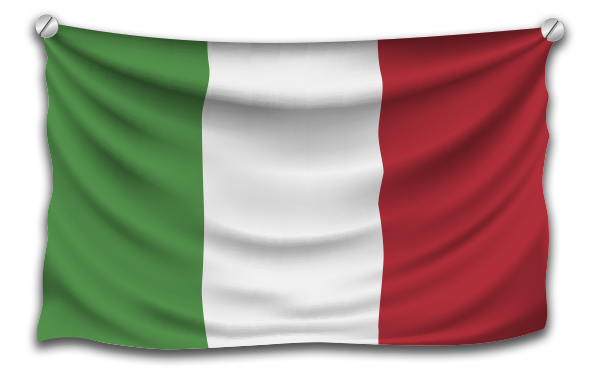VOLUNTEER LANGUAGE TEACHER ASSISTANT ABROAD PROGRAM
Italy
Program Schedule
Availability: September – June
Program Length: 5-8 weeks
Price: $3,400
Program Length: 12 weeks
Price: $3,700
Prices are subject to change
SUBMIT INTEREST IN LANGUAGE TEACHER ASSISTANT ABROAD PROGRAM ITALY

Volunteer Language Teacher Assistant Abroad Program Italy
The ICES short-term Language Teacher Assistant in Italy shadows one or many language teachers during classes at a local school and provides teaching and learning support in whatever way possible.
The international volunteering experience acquired during the program will look great on a resume and enhance the participant’s professional career as well as being an excellent opportunity for participants to develop communication/teaching skills and learn some basics of the destination language. At the same time, the program encourages local students at a school to learn about different cultures and improve their language skills by interacting with a native speaker.
Teacher assistants are expected to volunteer an average of 18 hours/week alongside a language teacher. The schedule will be set with the school. Teaching hours can be from Monday to Saturdays, depending on the school. Italy: middle and high schools.
Participants can be placed in a volunteer host family, in a residence or in a boarding school. Full board is included.
Italy Country Information
Italy, situated in Southern Europe, is famous for its history, art, music, literature, heritage sites, amazing and varied landscape, monuments, handicraft and its tasty food. Located in the middle of the Mediterranean sea, the Italian Republic, which has the shape of a high heeled boot, consists of a quite large peninsula and two main islands, Sicily and Sardinia. For centuries, its peculiar central position has made this country the crossroads of different cultures, which had a noticeable influence on Italian architecture, traditions and customs.
Location: Southern Europe
Area: 301,388 sq km
Inhabitants: 59.8 million
Capital: Rome
Official language: Italian
National holiday: 2 June
Celebrities: Sophia Loren, Totò, Alberto Sordi, Fellini…
Italy is one of the world’s most popular tourist destinations. This country offers, in fact, a variety of cultural and amusing attractions. Winter is perfect for skiing in the snow-covered Alps or visiting traditional Christmas markets. In summer, the hot weather can be enjoyed at the seaside, or why not explore the diverse landscape in one of the many national parks and wildlife reserves? The cultural offer is rich throughout the year, with a wide range of exhibitions, museums and theatres.
Italy, which is usually known as a ‘museum in the open air’, is home to the greatest number of UNESCO World Heritage sites. The list of the sites which UNESCO considers as ‘having outstanding universal value’ includes, for example, Venice and its lagoon, the historical centre of Rome and Florence, the archaeological areas of Pompei, Hercolaneum and Torre Annunziata, the church and convent of Santa Maria delle Grazie in Milan with ‘The Last Supper’ of Leonardo da Vinci. Italy is also known for its art academies, theatres and music. Opera houses, such as La Scala in Milan, are representative of classical music, to which many Italian composers, for example Rossini and Verdi, gave a significant contribution during the previous centuries. However, Italy is also in the forefront of contemporary art and music.
The climate is usually mild all the year round. Temperatures rarely reach over 40°C in the summer or below -10 °C in the winter. The peninsula can be divided into three sections according to its climate. Northern temperatures are frigid during winter and hot during summer since there is not the mild action of the sea. The center of Italy does not often present extreme temperatures during winter and summer, while in the south and in the main islands the climate is hot and dry with usually higher temperatures than the rest of Italy during winter. This climate has given birth to a range of different landscapes, part of which is carefully protected.
Italian food is often synonymous with pasta and pizza, but this country has much more to offer. Each region has a wide range of traditional foods and specialties which differ significantly from north to south. In the north there is: “risotto”, in Milan, a dish made with rise and saffron; “polenta”, which is a kind of maize flour, sided by meat or cheese sauces; “lasagna”, which consists of layers of pasta, ragù and white sauce, and chocolate in Perugia and Torino. On the other hand, fish, spices and citrus fruits are the base of the southern regional cuisine, which includes, for example, products of the Arab and Greek influence. It is not possible to list the variety of specialties that can be found, but there are many restaurants where you can relax, enjoy and taste this food. Beside this, there are many open markets and shops, where you can buy fresh products and give Italian cooking a go!
School Life
Education in Italy is compulsory from the age of six to the age of sixteen. Both private and public schools are controlled by the State through the Italian Ministry of Public Education. The management and administration of schools are locally organized, with district school councils and province school councils. High school is for students aged fifteen to nineteen. There are six basic types of secondary school:
Liceo Classico—Classics Lyceum
Liceo Scientifico—Scientific Lyceum
Liceo Linguistico—Linguistic
Lyceum Liceo Artistico—Artistic Lyceum
Istituto Tecnico—Technical
Institute Istituto Professionale—Vocational
Institute Students who are willing to attend university usually will choose Lyceum, while the Technical and Vocational Institutes tend to lead directly to specific careers. Exchange-students are usually placed in Scientific or Linguistic Lyceum as they offer several subjects, including foreign languages.
The school runs from mid-September to mid-June. Classes are typically held in mornings only, from 8 am to 1–2 pm, six days a week (from Monday through Saturday). From Christmas time to a week after New Year’s Day, schools are closed all over the country. There is also a week long break for the Easter holidays. Italian schools usually don’t organize afternoon sport activities, so students are expected to spend part of the afternoon doing their homework and self-study. Social life begins around 6 pm and is mainly concentrated to the weekend. There are no school uniforms. There is generally less familiarity between teachers and students in Italian schools compared to schools in many other countries. Exchange students will normally not get grades, but they are expected to show an interest in all subjects, study diligently, complete their assignments, and make an effort to speak Italian. Please note, that Italian teachers and students are not forced to know the exchange student’s native language, so the sooner he/she will learn Italian, the better it will be for him/her. Exchange students are expected to respect the teachers, the school rules and the classmates. Before student’s departure, the school usually gives them a certificate of attendance.
Family Life
Italian families frequently welcome international students into their homes, offering a warm and immersive cultural experience. A typical Italian household consists of parents and one or two children, often living in apartments they keep neat. Host families expect students to pitch in with daily chores, like tidying their rooms, helping at dinner, and caring for pets or younger siblings.
Italian mothers, in particular, tend to be very protective, wanting to stay informed about their children’s lives and quickly offering solutions to problems. While exchange students will have independence, they’re expected to be respectful, asking for permission and providing details on their whereabouts. Those used to greater freedom may need to adjust.
Communication is key in an Italian family, and sharing thoughts, experiences, and emotions strengthens bonds. Meals are a special time to talk—breakfast is light, lunch is mid-day, and dinner, the biggest meal, includes courses like pasta, meat, and dessert. Dining together is a valued tradition.
Social etiquette involves greetings like handshakes for men and cheek kisses for women, as well as casual hellos to neighbors. Students are encouraged to participate in family life, join in activities with host siblings, and engage in outings. Afternoons are typically spent doing homework or sports, so keeping busy with similar activities is a good idea.
With adaptability, respect, and enthusiasm, exchange students can truly become part of the family—experiencing Italian culture firsthand in a welcoming environment.
Program Fee
The program fee includes:
- Language Teacher Assistant application processing
- Host family screening
- Placements with full board
- ICES 24/7 emergency line
- Local assistance
- 24/7 emergency line in the host country
- Health insurance
- Criminal background check fees
Participant is responsible for:
- Flight costs
- Arrival/departure transfers
- Personal expenses
Requirements
- Minimum of 18 years old
- High school graduate (being a university student or graduate is preferable)
- Basic knowledge of Italian is preferred, but not required
- Be able to pass a criminal background check
Visas
Participants in short-term programs (90 days or less) do not need a visa, but a valid passport is required. The passport needs to be valid for at least three months beyond the planned departure date from France and Italy. It is highly recommended to have six month validity remaining for added security.
About ICES
We are a nonprofit organization committed to international, educational student exchange. Our goal is to promote cultural awareness and international understanding by offering quality, educational and cultural programs for students, host families and schools. Our staff is dedicated to creating a positive exchange experience for all program participants.
SUBMIT INTEREST IN THE LANGUAGE TEACHER ASSISTANT ABROAD PROGRAM – ITALY
